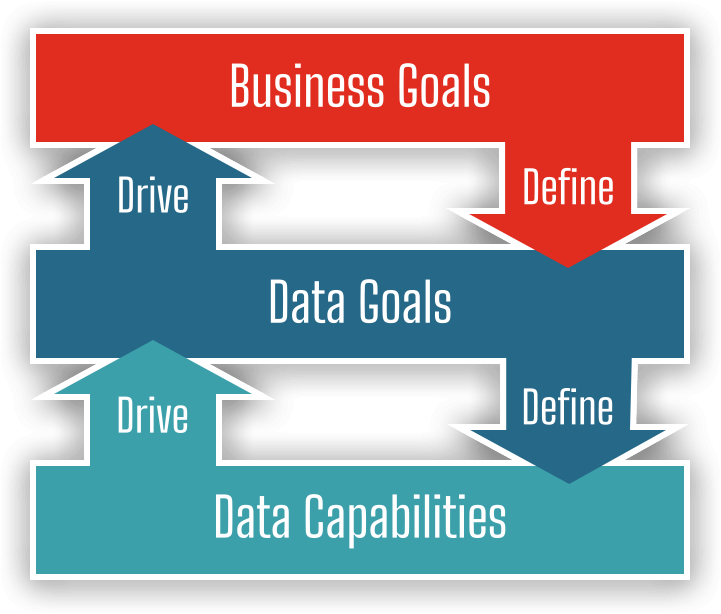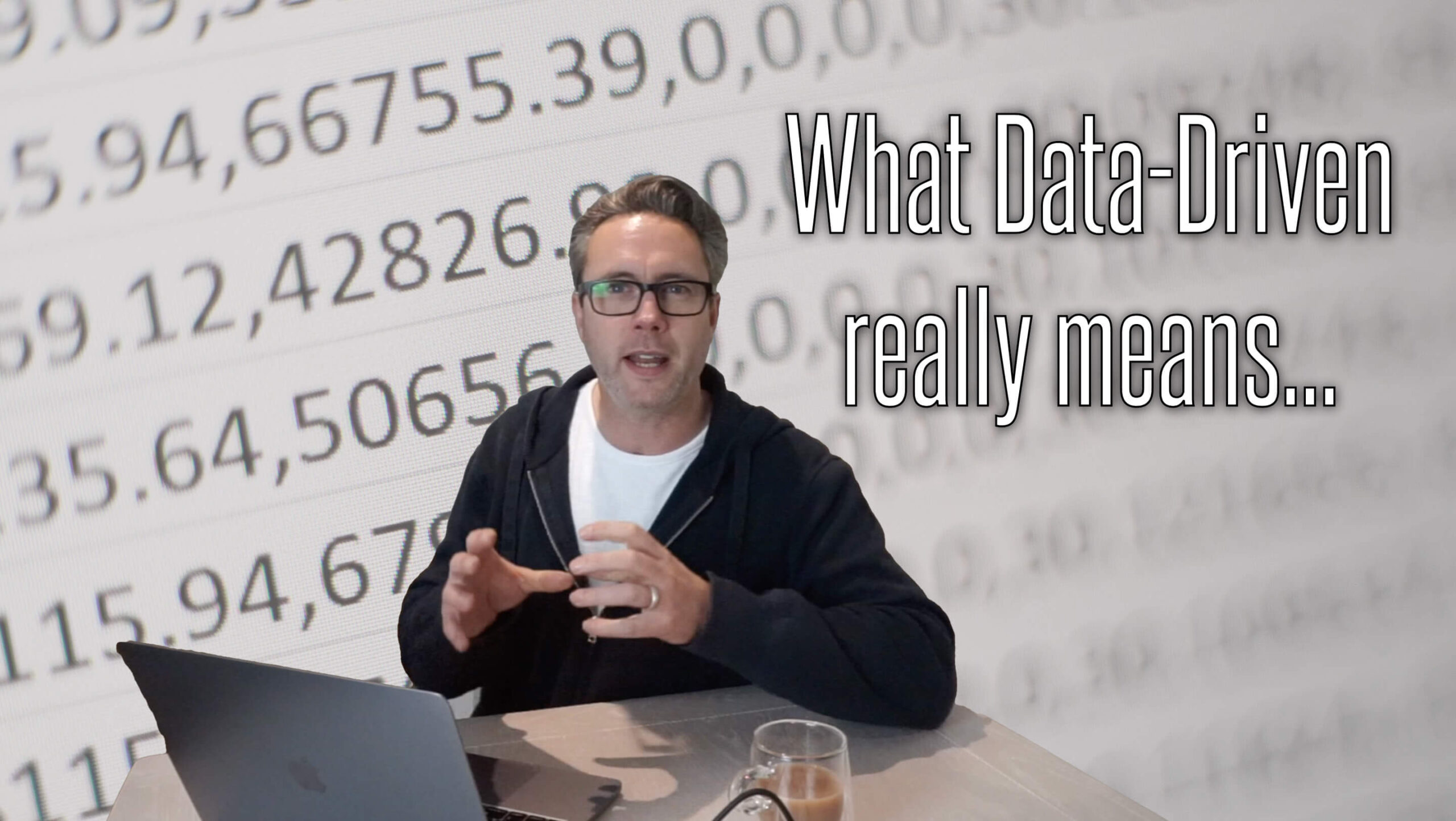“We need to be more data-driven!” is something we hear almost every business say these days. But it’s become a bit of of a throwaway catchphrase…
A lot of businesses find it hard to actually become data-driven, not because they don’t have the right skills or technology, but simply because they haven’t properly understood what data-driven means for their particular business.
And it’s extremely difficult to achieve an objective, if you don’t really know what that objective is. Like I always say, “a target you cannot see, is very hard to hit!”
Talk is cheap… Stop simply saying you want to be more data-driven and start actually achieving it, by getting the first crucial step right — actually understanding what data-driven means for your particular business.
Why do businesses sometimes fail to define what data-driven really means?
Why do so many businesses struggle with a fuzzy definition of data driven? After all, we’re all familar with the basic principle of SMART objectives, right?
There’s two reasons why:
REASON 1 — SOMETIMES WE SIMPLY FORGET
Let’s be honest — ‘Be more data-driven’ is a leadership directive that’s often handed down with a ‘just make it so’ attitude. Sometimes, business leaders are content with seeing a few projects covering things like data cleansing and dashboarding, as evidence that the business is taking real steps towards being more data-driven. When in actual fact, that’s the data leadership equivalent of running on a treadmill — lots of activity but no real forward progress.
That’s what we call data-busy, and I covered that back in episode 1 on the ‘Let’s Get Data Done’ YouTube channel. You can view it, here: https://youtu.be/CtozCihjghA
REASON 2 — IT’S UNEXPECTEDLY DIFFICULT
When a business does recognise that it needs to define clear and accountable data-driven goals, people are often surprised at how difficult it is.
I believe that’s because ‘data-driven’ is something that’s said so easily and so commonly now, that there’s an almost subconscious expectation that if we invest in some new technology and employ a couple of data scientists, then we’ll definitely become data-driven, right? (Spoiler alert — that doesn’t do it!)
Pinpointing data-driven goals can be surprisingly hard when there’s a lack of clear business strategy, or there’s a failure by people to translate business goals into the roles that data can play in driving achievement of those goals.
Which leads me nicely to the key takeaway from this article…
What data-driven really means
The universal definition of data-driven is actually very simple — ready?
Your business is data-driven is when data is measurably driving achievement of your business’s goals.
In the purest sense, thats all data-driven really means — data is driving achievement of your goals. That may sound like an obvious definition, but starting with that fundamental clarity is an essential first step in becoming truly data-driven, and not just data-busy. And here’s why…
What actually being data-driven really means
When you embrace that definition of data-driven, you realise that to become data-driven you must initially shift your focus away from data and onto your business’s goals. That’s because you can’t use data to drive achievement of your business’s goals, if you’re not completely clear on what those goals are. When you build a data strategy from this starting point, the journey to becoming truly data-driven becomes clear — and it’s formed of just three steps…
- Translate your business goals into data goals (AKA the jobs your data need to do, to achieve your business’s goals)
- Translate your data goals into data capabilities (AKA what you need to have and do, to achieve your data goals)
- Plan how you’ll acquire those data capabilities (AKA painting a realistic picture of the changes in, and impacts on your business)

These three steps are derived from three core principles of data strategy, which you can learn more about simply by visting datastrategy.how. There, you’ll find a complete and comprehensive data strategy walkthrough which covers everything you need to know to build a data strategy that will make your business truly data-driven, not just data busy.
To sum up…
Increasingly, businesses are setting themselves the objective of ‘becoming more data-driven’.
But many businesses find it difficult to even get started, on account of not really knowing or being able to agree on what data-driven really means. The good news, is that this is a really simple challenge to solve. Use the definition of data-driven that I’ve shared with you in this article, to launch your data strategy in the best possible way. Everything you need to know is in the guide at datastrategy.how, plus you can get free access to all of the tools and templates you’ll need by unlocking the Data Strategy Management Toolkit at datastrategytoolkit.com
So to wrap up, to be truly data-driven you have to first know what data-driven really is, and then know how to get there. I hope you’ve found this article useful. If you have, please remember to follow me to get notified when I share more content about how to get data done!





0 Comments